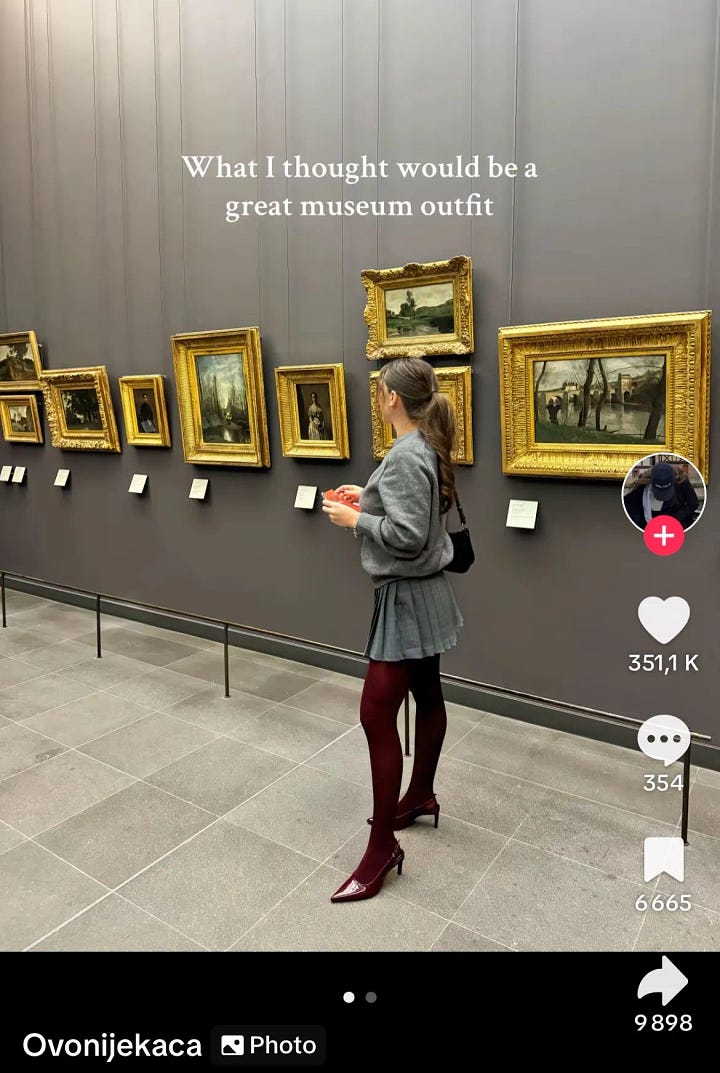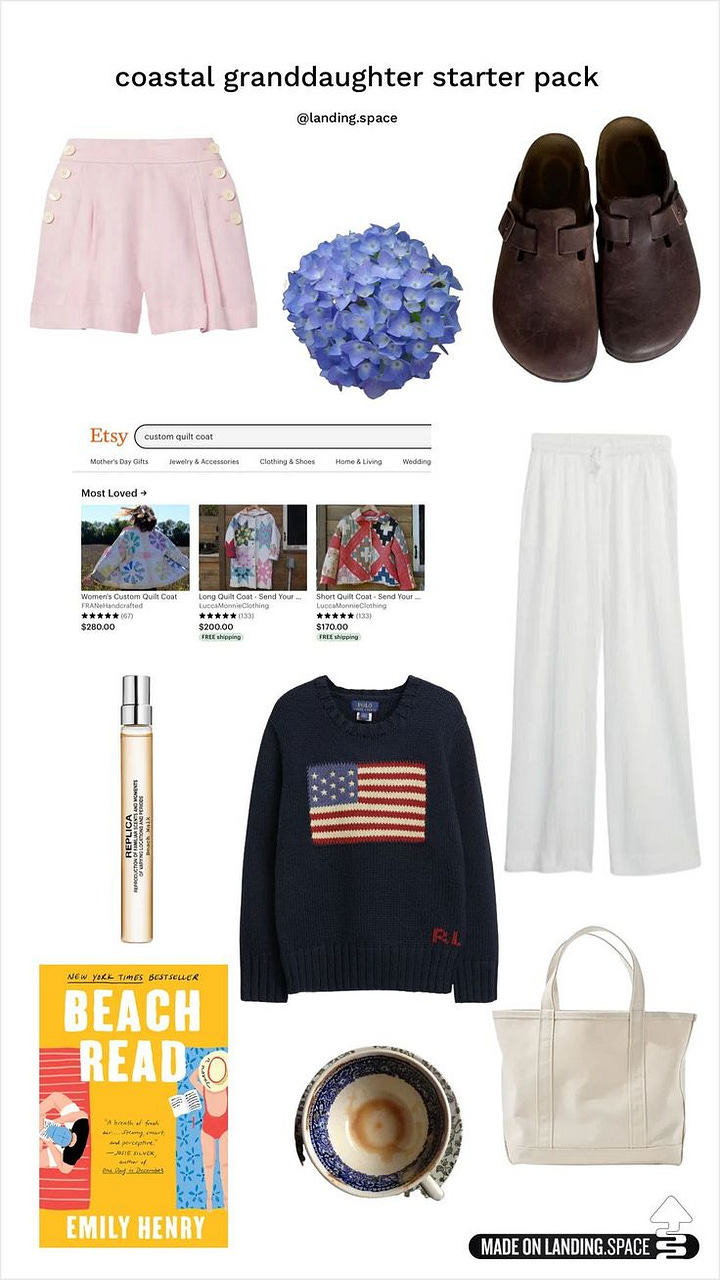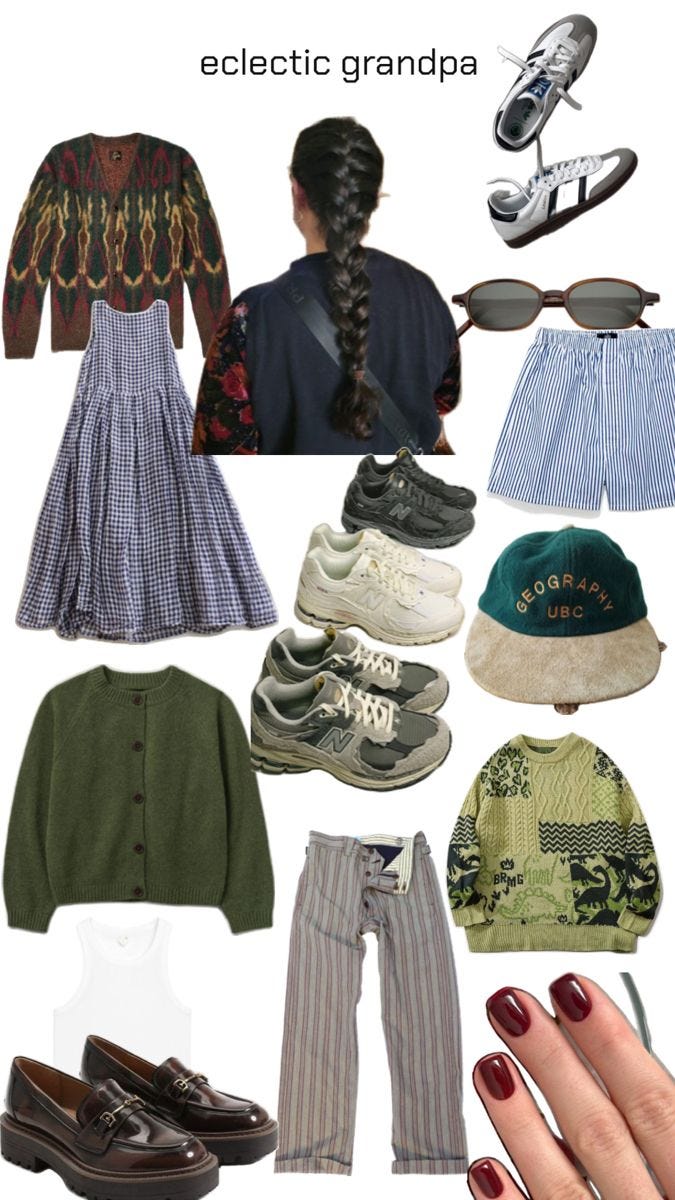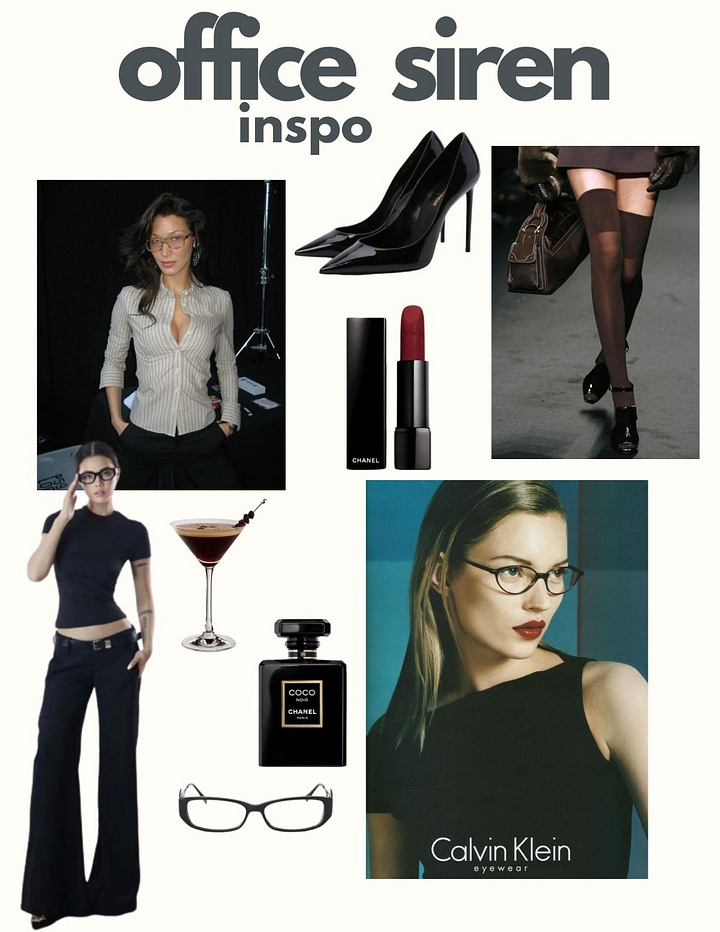A recent viral TikTok depicted a woman visiting a museum and spotting a stranger in the exact same trending outfit. Not twinning on purpose, just caught in the same FYP. Microtrends (a term coined to describe the short-lived fashion cycles driven by social media) move so quickly that personal style has become a race, not a choice. The moment something peaks, it’s already outdated, and if you’re even slightly late, you’re not just behind; you’re a basic bitch.


Style used to be something you figured out over time on a personal level. Now, many view fashion more like an obligation than an art: a constant pressure to predict the next aesthetic shift before the current one expires. One month, it’s eclectic grandpa patterned boxers and oversized tweed; the next, it’s office siren pinstripe corsets and skinny sunglasses. Before that, it was ballet flats and cow print. Blink, and you’ve missed the moment; almost overnight, those same trends are declared basic and overplayed. That’s how you end up with a wardrobe full of trends, but nothing that you actually like (or frankly, look your best in).
the hedonic trend-mill
I will preface this by saying this isn’t intended to be a Boomeresque, shaking-my-fist-at-the-sky “back in my day, we found our style by thrifting in alleyway dumpsters” rant, just an observation. I, too, am a Tiktok-brained Zoomer who has bought a few microtrendy items.
Trends are not some novel concept, of course. It’s the velocity that’s changed; what once took seasons to rise and fall now happens in a matter of weeks. A trend might first appear in high fashion, trickle down to mainstream retailers, and linger for several seasons before eventually fading. Now, trends die the second they peak.
But the speed isn’t an unwanted side effect, it’s the entire point. Fashion has been fully absorbed into the attention economy, and in an ecosystem that thrives on engagement, longevity is a bug, not a feature. The moment a trend lingers too long, it stops driving new content. It stops selling new products. It stops giving people a reason to refresh their feeds, their wardrobes, their sense of self.
The backlash to this cycle has already begun. Movements like underconsumption core and project pan, where rejecting trends altogether is framed as an aesthetic choice, have gained traction in response. The idea is pretty straightforward; use what you already own and disengage from the pressure to keep up. But even not participating in trends has become its own kind of branding. “Timeless” style influencers still curate their outfits to be optimal for engagement. Even a refusal to engage with trends can be presented as taste. Whether you’re chasing the latest look or rejecting it, your FYP is still a step ahead.
symbiosis between social media and fast fashion
Microtrends are manufactured intentionally. They can only exist because of the mechanics of social media and fast fashion’s ability to respond instantly. They aren’t just sped-up versions of old trends; they follow an entirely new lifecycle, dictated by algorithms and commerce rather than organic adoption.
Short-lived trend cycles are successful because they create content that is easy to replicate, comment on, buy into, and eventually reject. A trend doesn’t just need people to wear it; it needs people to discuss it, debate whether it’s over, and generate discourse. Social media doesn’t just spread trends, it engineers them for maximum churn.
But a trend can’t go viral without an accessible, cheap way to participate, and fast fashion brands thrive on a constant pipeline of “run, don’t walk, to get the Brazil tank top!” to mass-production. This is how the relationship works:
a trend is born.
A viral TikTok, influencer partnership, or Pinterest mood board introduces a look. The best microtrends are aesthetic templates: easily recognizable, reproducible, and nameable (tomato girl, office siren, mob wife, etc etc). What is unique about microtrends is that they are presented as “fully formed” due to these labels. This is because they aren’t emerging organically, they’re being pushed by trend forecasting companies, influencers, and your FYP.




i'm overstimulated fast fashion churns out the look instantly and affordably.
The moment a trend starts gaining traction, retailers like Shein and Edikted flood the market with cheap polyester iterations. Unlike past decades, where trends trickled down slowly from luxury to mass market, the process is now simultaneous. This instant production means trends hit peak saturation incredibly quickly.
peak visibility: the trend is everywhere, it’s over. pack it up.
What once made something desirable (being seen often enough to become aspirational) now makes it disposable. When everyone has access to a trend at the same time, it’s not special anymore. This is why social media doesn’t just accelerate trends; it accelerates their decline. The moment a microtrend reaches peak visibility, the discourse shifts. Creators start declaring it passé. Engagement moves from hype to criticism.polyester ragebait: the discourse becomes the content.
The decline of a trend is just as important as its rise. All attention is good attention. Declaring the Adidas Samba “over” generates just as much engagement as celebrating it. People start debating when it died, who ruined it, whether it will come back. And just as quickly, a new aesthetic emerges, and the cycle starts again. RUN, DON’T WALK! A new dropshipped AliExpress item just dropped!
This constant churn isn’t just tiring, it rewires how we engage with fashion altogether. The rise and fall of microtrends no longer reflects cultural shifts; it reflects platform mechanics.
the impact of microtrends on personal style
The exhaustion of microtrends isn’t just about speed. It’s also about the fact that they no longer reflect cultural attitudes like older trends did (e.g. Y2K styles being shaped by optimism about the digital future).
Microtrends feel non-contextualized. A microtrend isn’t worn because it represents something; it’s worn because it’s a Zara bestseller. Besides, there’s no time to form an attachment to a piece when it’s already on its way out.
Style choices are, on a conscious and subconscious level, your way of presenting yourself to the world. Like it or not, you’re designing the cover everyone will judge the book by.
When you cycle through aesthetics this quickly, the concept of personal style becomes illusory. There’s no time to form an attachment to a piece when it’s already on its way out. Style is supposed to evolve with you, not reset every few weeks.
contrarianism does not imply authenticity
Microtrends have spawned reactive movements like underconsumption core. The anti-trend has been neatly packaged like any other, its own kind of performative aesthetic. Influencers post perfectly lit photos of their “timeless” wardrobes, signaling their refusal to participate in the churn while still remaining palatable enough to blow up on Tiktok. Even disengagement has been commodified, with quiet luxury offering an aspirational and sexy version of opting out.
But being contrarian isn’t the same as being free. We don’t exist in a vacuum, separate from trends, aesthetics, or consumer cycles. A wardrobe of well-tailored, “forever” pieces can function the same way as a fast fashion haul—something to display, to categorize, to prove you’re on the right side of taste.
So there is no point in pretending you’re above it all. Maybe personal style is less about resisting trends entirely and more about learning to move through them without letting them dictate everything you consume. You have agency! IDGAF what you wear; opt in, opt out, whatever; I just want you to like what you see in the mirror :)





Hard agree w thesis here